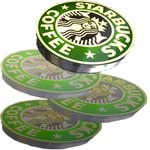Case Study Contents
- Introduction
- eBay – Company Background
- Pierre Omidyar – The founder of eBay
- Early Days – From AuctionWeb to eBay
- Meg Whitman and the growth of eBay
- eBay – Quick Facts
- eBay’s International Expansion
- Exhibit I – eBay’s Net Revenue by Territory
- eBay and its entry in Japan
- Exhibit II – Yahoo Japan and eBay comparative data (in 2001)
- Why eBay failed in Japan?
- Stiff competition from Yahoo Japan
- Not adapting to local culture and practices
- No first-mover advantage
- Low-key Marketing and Advertising
- The return of eBay to Japan
- Questions for Discussion
- Exhibit III: Selected Financial Data for five years
- Exhibit IV: eBay stock performance graph
Case Abstract
Issues/Information Covered
- eBay’s entry strategy in Japan
- eBay company background
- Why eBay failed in Japan?
Introduction
“We were late to the market and entered when Yahoo!/Softbank had gained a lot of momentum through its Internet portal. eBay is committed to the Asian market and may return to the Japanese market when economic conditions are better and when they have a strategy that addresses the issues they currently face in Japan.”
– an eBay spokesperson in 2002.
Ever since its entry in Japan in 2000, eBay, the US online auctioneer was struggling. By the end of 2001, many analysts felt that eBay Japan should admit defeat and sell a majority stake in the venture to a bigger local player. But even then, eBay would face an uphill struggle. In February 2002, eBay, announced its decision to exit from the Japanese market after it failed to gain a foothold in Japan lagging behind market leader, Yahoo Japan. The company also announced that its Japanese language site would be closed and 17 jobs would be cut. All its Japanese customers would be directed to its US based auction operations/site. At the time, eBay was the number one auction site in all of the other 18 countries in which it operated and one of the few successful internet companies, having seen its profits soar even amid the dot-com implosion. eBay’s strategy in Japan had failed. Japan was a rare failure for the company.
Japan was critical to eBay’s success because it was the world’s second-largest Internet market. The gap had to be closed soon otherwise Yahoo Inc. could easily beat it in the rest of Asia. Yahoo Japan was the No. 1 or No. 2 portal everywhere except China. In December 2007, Yahoo Japan and eBay made a deal to link their auction sites and make it easier for their respective users to bid on and buy goods available on each other’s sites. A new website by name “Sekaimon” (‘gateway to the world’ or ‘global shopping’ in Japanese) – www.sekaimon.com – was launched in December. The site allowed Yahoo Japan users to bid on items listed on eBay’s US site using their Yahoo Japan ID. The deal made cross-border bidding easier and gave eBay another chance to woo Japanese consumers…

 Introduction
Introduction


